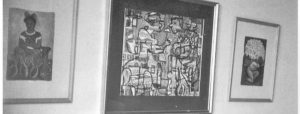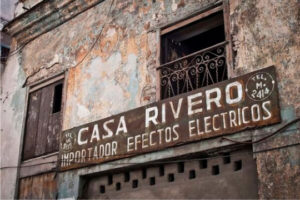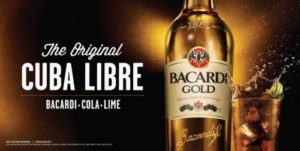THE “REVOLUTIONARY” CONFISCATIONS OF GOODS to CUBAN OWNERS.
Now the 3 of January, 1959, two days after the triumph of the revolution, the insurgents created a first revolutionary Government which included a Ministry of recovery of misappropriated assets. Its owner was Faustino Pérez, one of the expedition members on the yacht Granma and first combatants in the Sierra Maestra.
He and his team got to work immediately in a vast operation of nationalizations that in the following years was articulated in a more organized way from a battery of laws; among them the No. 989 of 1961, which established the confiscation of “abandoned property” by those who had left the country more or less forced to go into exile. This rule, repealed in 2012, was that protected the largest number of disposals, from those undertaken against more rich and businessmen close to the dictator Fulgencio Batista to many dozens of owners of class against upper middle. There was everything.
Fidel Castro and his men hurried with expropriations.
On October 11, 1960, quoted Ernesto Che Guevara in his office in the Central Bank of Cuba to magnate Julio Lobo, who up to be stripped of his fortune had been the richest man and with the collection of most important art of the island. To his surprise, in that meeting Che offered him directing the sugar industry of the country, before his large extent and now the country. “You are Communist and I am a lifelong capitalist. It may not be”, Wolf rejected. The next day, to go to his office to collect everything he could before leaving Cuba, the soldier who was stationed at the door, he said: “now we have you where we wanted to.” Are you naked! And he replied: “I was born naked, I will die in balls and some of the best moments of my life I spent them in balls”.
Among the objects in the collection that the businessman had left after themselves after long years of passion more than fetishist, as he was educated man, had Sèvres porcelain, paintings of Regnault, Thomire bronzes and a pair of pistols of Napoleon. All of which the regime relocated in the former Palace of Renaissance style of the military and diplomat of the Machado Government, Orestes Ferrara.
Similar fate ran the heritages of the brothers Jose and Alfonso Fanjul, emperors also sugar, and the second political family, the Gomez-mena. On the walls of their mansions were, leaving them in Cuba, paintings by Goya, Murillo, Caravaggio, Boucher, Lebrun and numerous Sorolla. Behind a false wall of the imposing casa de María Lui sa Gomez-mena Vila, Countess of Revilla de Camargo and aunt of the wife of Fonsy, their new guardians found valuable jewels and pieces of silverware. The men of Castro raised that and other similar findings as the dismantling of a plot in which the sin of accumulating wealth was added the vileness of hide it after the flight. “In shoeboxes with tens of thousands of dollars, in vessels buried full of precious jewels, in walled walls or concealed closets, the embezzlers who left the country sought to hide what had been stolen from the people. They hid it in the hope of returning someday to Cuba and rescue this wealth. There were also works of art which went to the national heritage and are now part of the collections that are exhibited in the museums for enjoyment and culture of the people”, today reza official information in this regard.
Some retained the Gomez-mena to leave the island. Including the panic to lose it all. The French designer Herbert de Givenchy would remember it many years later, between fun and malicious, in an interview with Vanity Fair: “the Countess (probably the aforementioned niece and heiress of his title) always came to the Studio with two maids who brought plastic bags full of something super-heavy. We wondered what the hell would be there. And one day we learned that they were kilos and kilos of sapphires, rubies, emeralds and diamonds. Lady went with her jewels everywhere because I was afraid of that stole them! “.”
The House of the Countess of Revilla, behind whose walls were found even in 2003 five paintings of 18TH-century French, was converted into a Museum of decorative arts. In it you can see today, also, a part of the legacy of Oscar B. tapes, another Tycoon of sugar as well as former Ambassador of Cuba at the United Nations, who had died in 1957 leaving responsible administration of their possessions to the Chase Manhattan Bank, with the order to create a foundation for scholarships for Cuban artists. Goya, Velázquez, Murillo, Rembrandt, el Greco and Sorolla are some painters who tapes possessed one or more works. Some of them went to the fine arts of Havana and part stayed in New York, where he spent so long as in the Cuban capital.
Two Sorolla of legacy tape gave rise to one of the hottest disputes between former owners of works confiscated by the revolution, their representatives – in this case the tapes Foundation-, and collectors or auctioneers who, like Sotheby’s in this episode, participated in the sale and purchase of paintings expropriated on the island. The same auction house took part in the placement of the table Malaga port, Sorolla, which had belonged to the Fanjul and the fine arts sold within a batch of four paintings of the Valencian. Such operations, developed in the years 80 and 90, gave rise to rivers of ink and some judicial surprise. As both the Foundation tapes and Fanjul embedded defeats in court that denied their claims against Sotheby’s. The plaintiffs would appeal to the controversial law Helms Burton, which punishes the trade with goods nationalized by the Castro Government. But it is believed that at the same time they began conversations which kept under the largest of the sigils.
Because life spins and business is business. Thus, today, Alfonso Fanjul, giant of the sugar in the United States with great political influence and friend of King Juan Carlos, encourages the process of dialogue initiated by Barack Obama and Raúl Castro and does not rule out investing in the island.
The staunchest anti include the nationalization of the Wolf collection as part of the “looting” or the “looting” Cuban, but one of his daughters, Luisa María, has maintained a cordial dialogue with Havana, and both the widow of the late Prince Napoleon, Alix Foresta, and the Ambassador of France in 2011 attended the reopening of the museum dedicated to the emperor. All friends.
In other less famous but numerous cases, the dispersion of parts sold or stolen, and then often auctioned complicates not only recovery but, to begin with, its location and accreditation of their property. The change of hands started often when employees or family members that the exiles had left in charge of their belongings were pushed, often by necessity, to offer them to the highest bidder.
Lawsuits and demand procedures there is open however. And more and more since in December 2014, Obama and Castro sealed the thaw. Not so much in the field of cultural as in the real property estate. Such as holding Isabel Cabarrocas, 1898 economic recoveries company, based in Barcelona and representing 250 families with claims by nearly 1,800 million euros, the road suitable for restitution or compensation obtaining is the negotiation.
But the Covenants or resolutions that can compensate those affected will take years yet. They will arrive, if they arrive, to the rhythm of Cuba.
Agencies / La Vanguardia, Spain/Internet Photos/Arnoldo Varona/TheCubanhistory.com
THE CUBAN HISTORY, HOLLYWOOD.
FOLLOW US ON TWITTER AND FACEBOOK. THECUBANHISTORY.COM
![]() LAS “REVOLUCIONARIAS” CONFISCACIONES DE BIENES A PROPIETARIOS CUBANOS.
LAS “REVOLUCIONARIAS” CONFISCACIONES DE BIENES A PROPIETARIOS CUBANOS.
Ya el 3 de enero de 1959, dos días después del triunfo de la revolución, los insurgentes crearon un primer Gobierno Revolucionario que incluía un Ministerio de Recuperación de Bienes Malversados. Su titular era Faustino Pérez, uno de los expedicionarios del yate Granma y primeros combatientes en la Sierra Maestra.
Él y su equipo se pusieron manos a la obra de inmediato en una vasta operación de nacionalizaciones que en los años siguientes se articuló de manera más organizada a partir de una batería de leyes; entre ellas la n.º 989 de 1961, que estableció la confiscación de las “propiedades abandonadas” por quienes habían dejado el país de manera más o menos forzosa para irse al exilio. Esa norma, derogada en el 2012, fue la que amparó el mayor número de enajenaciones, desde las emprendidas contra los empresarios más ricos y cercanos al dictador Fulgencio Batista hasta otras muchas contra decenas de propietarios de clase media alta. Hubo de todo.
Fidel Castro y los suyos se dieron prisa con las expropiaciones.
El 11 de octubre de 1960, Ernesto Che Guevara citó en su oficina del Banco Central de Cuba al magnate Julio Lobo, quien hasta quedar desposeído de su fortuna había sido el hombre más rico y con la colección de arte más importante de la isla. Para su sorpresa, en aquella reunión el Che le ofreció dirigir la industria azucarera del país, antes suya en gran parte y ahora del país. “Usted es comunista y yo soy un capitalista de toda la vida. No puede ser”, rechazó Lobo. Al día siguiente, al ir a su despacho para recoger todo lo que pudiera antes de abandonar Cuba, el soldado que estaba apostado a la puerta le dijo: “Ahora le tenemos donde queríamos. ¡Está usted en pelotas! Y él replicó: “Nací en pelotas, moriré en pelotas y algunos de los mejores momentos de mi vida los pasé en pelotas”.
Entre los objetos de la colección que el empresario había dejado tras de sí después de largos años de pasión algo más que fetichista, pues era hombre culto, había porcelanas de Sèvres, pinturas de Regnault, bronces de Thomire y un par de pistolas de Napoleón. Todo lo cual el régimen reubicó en el antiguo palacio de estilo renacentista del militar y diplomático del Gobierno de Machado, Orestes Ferrara.
Parecido destino corrieron los patrimonios de los hermanos José y Alfonso Fanjul, emperadores asimismo del azúcar, y de la familia política del segundo, los Gómez-Mena. En las paredes de sus mansiones quedaron, al salir ellos de Cuba, cuadros de Goya, Murillo, Caravaggio, Boucher, Lebrun y numerosos Sorolla. Detrás de una pared falsa de la imponente casa de María Lui sa Gómez-Mena Vila, condesa de Revilla de Camargo y tía de la esposa de Fonsy , sus nuevos guardianes hallaron valiosas joyas y piezas de platería. Los hombres de Castro plantearon ése y otros hallazgos similares como el desmantelamiento de un complot en el que al pecado de acumular riqueza se añadía la vileza de ocultarlo tras la huida. “En cajas de zapatos con decenas de miles de pesos, en vasijas enterradas llenas de joyas preciosas, en paredes tapiadas o closets encubiertos, los malversadores que dejaron el país pretendieron esconder lo que habían robado al pueblo. Lo ocultaron con la esperanza de regresar algún día a Cuba y rescatar esa riqueza. Hubo también obras de arte que pasaron al patrimonio nacional y ahora forman parte de las colecciones que se exhiben en los museos para disfrute y cultura del pueblo”, reza todavía hoy la información oficial al respecto.
Algo conservaron las Gómez-Mena al dejar la isla. Incluido el pánico a perderlo todo. El diseñador francés Herbert de Givenchy lo recordaría muchos años después, entre divertido y malicioso, en entrevista con Vanity Fair: “La condesa (probablemente sobrina de la citada y heredera de su título) siempre venía al atelier con dos mucamas que traían bolsas de plástico llenas de algo pesadísimo. Nos preguntábamos qué demonios llevarían ahí. Y un día nos enteramos de que eran kilos y kilos de zafiros, rubíes, esmeraldas y diamantes. ¡La señora iba con sus joyas a todas partes porque tenía miedo de que se las robaran!”.
La casa de la condesa de Revilla, tras cuyos muros se hallaron aún en 2003 cinco cuadros del siglo XVIII francés, fue convertida en Museo de Artes Decorativas. En él puede verse hoy, también, una parte del legado de Óscar B. Cintas, otro magnate del azúcar además de exembajador de Cuba en las Naciones Unidas, quien había fallecido en 1957 dejando encargada la administración de sus posesiones al Chase Manhattan Bank, con la orden de crear una fundación para becar artistas cubanos. Goya, Velázquez, Murillo, Rembrandt, el Greco y Sorolla son algunos pintores de los que Cintas poseyó una o más obras. Parte de ellas pasaron al Bellas Artes de La Habana y parte se quedaron en Nueva York, donde él pasaba tanto tiempo como en la capital cubana.
Dos Sorolla del legado Cintas dieron lugar a uno de los más sonados litigios entre antiguos propietarios de obras confiscadas por la revolución, o sus representantes –en este caso la Fundación Cintas–, y coleccionistas o subastadoras que, como Sotheby’s en este episodio, participaron en compraventas de pinturas expropiadas en la isla. La misma casa de subastas intervino en la colocación del cuadro Puerto de Málaga, de Sorolla, que había pertenecido a los Fanjul y el Bellas Artes vendió dentro de un lote de cuatro pinturas del valenciano. Tales operaciones, desarrolladas en los años 80 y 90, dieron lugar a ríos de tinta y alguna sorpresa judicial. Pues tanto la Fundación Cintas como los Fanjul encajaron derrotas en tribunales que denegaron sus reclamaciones frente a Sotheby’s. Los demandantes apelarían a la polémica ley Helms Burton, que castiga el comercio con bienes nacionalizados por el Gobierno castrista. Pero se cree que al mismo tiempo iniciaron conversaciones que mantuvieron bajo el mayor de los sigilos.
Porque la vida da vueltas y los negocios son los negocios. Así, hoy, Alfonso Fanjul, gigante del azúcar en Estados Unidos con gran influencia política y amigo del rey Juan Carlos, alienta el proceso de diálogo iniciado por Barack Obama y Raúl Castro y no descarta invertir en la isla.
Los anticastristas más acérrimos incluyen la nacionalización de la colección Lobo como parte del “expolio” o el “saqueo” cubano, pero una de sus hijas, María Luisa, ha mantenido un cordial diálogo con La Habana, y tanto el embajador de Francia como la viuda del último príncipe Napoleón, Alix Foresta, asistieron en 2011 a la reinauguración del museo dedicado al emperador. Todos amigos.
En otros casos menos célebres pero numerosos, la dispersión de piezas vendidas o robadas y luego a menudo subastadas complica no sólo su recuperación sino, para empezar, su localización y acreditación de su propiedad. El cambio de manos empezó a menudo cuando los empleados o familiares que los exiliados había dejado a cargo de sus pertenencias se vieron empujados, muchas veces por necesidad, a ofrecerlas al mejor postor.
Pleitos y procedimientos de demanda hay abiertos no obstante. Y cada vez más desde que en diciembre de 2014 Obama y Castro sellaron el deshielo. No tanto en el ámbito de los bienes culturales como en el de los bienes raíces. Tal como sostiene Isabel Cabarrocas, de la Compañía de Recuperaciones Patrimoniales 1898, radicada en Barcelona y que representa a 250 familias con reclamaciones por casi 1.800 millones de euros, el camino idóneo para la restitución o la obtención de compensaciones es la negociación.
Pero los pactos o resoluciones que puedan resarcir a los afectados tardarán todavía años. Llegarán, si llegan, al ritmo de Cuba.
Agencies/La Vanguardia,Spain/Internet Photos/Arnoldo Varona/TheCubanhistory.com
THE CUBAN HISTORY, HOLLYWOOD.








